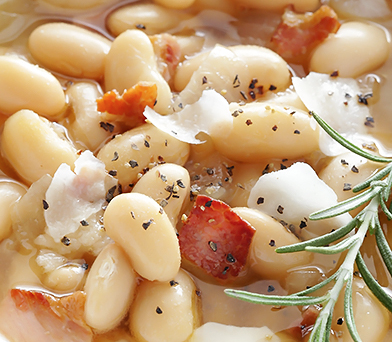New discoveries are highlighting the roles that a low-cost amino acid, taurine, plays in helping to preserve the human mind. The importance of maintaining critical concentrations of taurine, as we age is being recognised by specialists in cognitive medicine. In particular how it protects against environmental pollution. 1,2
Taurine is one of the most abundant amino acids in our bodies. It plays special roles in the brain, where it meets many of the criteria for being a neurotransmitter (a molecule that transmits signals between brain cells).3,4Its role in normal brain development is already established.5-7
It is thought that taurine:
•Protects brain cells against environmental toxins including lead and organic pesticides8
•Prevents dysfunction of mitochondria within brain cells, thereby sustaining energy levels9,10
•Protects brain cells against excitotoxicity, the chemically stressful effects of overstimulated brain cells9
•Enhances the inhibitory systems driven by the “relaxing” neurotransmitter GABA, which directly opposes excitotoxic effects11
•Cooperates with other neurotransmitters to promote induction of long-term potentiation, which is the neurological process by which memories are formed and retained during learning2,12
•Reduces brain inflammatory processes that are active in production of neurodegenerative disorders such as Alzheimer’s and Parkinson’s diseases13
•Stimulates proliferation and new neuron formation to sustain learning and memory14-16
•Protects brain cells against destruction following a stroke17,18
•Attenuates damage caused by beta amyloid protein, a major contributing factor in Alzheimer’s disease10,19
Protects the adult brain as well as the developing brain by slowing down ageing and also again environmental toxins, increasingly recognised as factors in adult neurodegenerative disorders including Parkinson’s and Alzheimer’s disease.20-23
Taurine protects against environmental poisons
A recent study showed that rats exposed to either a dangerous pesticide called CPF, lead acetate, or both toxins, showed biochemical damage leading to visible degeneration of brain tissue. When the animals were cotreated with taurine, those changes were prevented.8
These findings may have increased urgency as Americans discover just how our public infrastructure has failed to protect us against lead and other toxins in our water supplies.24
Taurine’s multiple mechanisms of action fight brain aging in other important ways, particularly by protecting the brain against internal age-accelerating forces.
For decades, scientists believed that adult brain cells could not reproduce, nor could new brain cells be generated afresh. Studies with taurine are turning that dogma on its head.
New brain cell growth was demonstrated in an exciting study released in 2015. Swiss scientists discovered that feeding middle-aged mice taurine could trigger rapid growth in populations of stem cells in the brain and greatly promote their subsequent differentiation into functioning adult brain cells.25 This effect had previously been shown in studies of cultured adult-mouse brain stem cells.14 And another 2015 study demonstrated that human-brain stem cells in culture underwent the same type of proliferation and specialization demonstrated in the animal studies.16
Together, these studies mean that humans are likely to be able to stimulate new brain cell development, and foster rapid synaptic connections between them with taurine.
Neurodegenerative diseases rob aging adults of memory, function, and dignity. Taurine has significant favorable impact on the malformed and toxic proteins that accumulate in the aging brain, leading to Alzheimer’s and Parkinson’s diseases.
Taurine can prevent damage wrought on brain cells by the malformed Alzheimer’s-related protein called beta amyloid.10 That mechanism may have been at work in a recent mouse model study of Alzheimer’s, in which six weeks of taurine added to drinking water rescued mice from developing cognitive deficits. In this study taurine supplementation restored cognitive function to that of age-matched normal mice.19
Elevated blood glucose and insulin resistance severely damage the brain. Some researchers now refer to Alzheimer’s as “type III diabetes.”26 In 2015, a study showed that taurine supplementation in mice could increase brain insulin receptors, an effect that might prove to be protective against the disease.27
Ischemic strokes are the result of an abrupt reduction in blood flow to specific brain regions. Strokes not only cause immediate symptoms, but also contribute to accelerated brain aging over the longer term.28,29 Once again, a role for taurine supplementation is evident.
Taurine appears to protect brain cells from the oxidative stress induced during a stroke, and to slow subsequent brain cell death.9,18 Chronic cellular destruction contributes to neurological problems in stroke survivors, so preventing it is an important approach to mitigating stroke damage. A mouse study has shown that adding taurine to another emerging stroke drug improved performance on neurological tests, while the drug alone was ineffective.18
Brains age for many reasons. Chronic toxin exposures, elevated blood sugar, accumulations of abnormal proteins and circulatory disruptions are known to accelerate brain aging.
Taurine is proving to have significant brain age-decelerating effects. Most recently, it has been shown to be protective against toxic exposures including lead and pesticides. It also inhibits beta amyloid formation associated with Alzheimer’s and helps regulate the brain’s control of glucose. Taurine also shows evidence of protection against the cognitive deficits induced by stroke.
It has also been reported that this amino acid has helped grow new brain cells.
References
- Menzie J, Pan C, Prentice H, et al. Taurine and central nervous system disorders. Amino Acids. 2014;46(1):31-46.
- Suarez LM, Munoz MD, Martin Del Rio R, et al. Taurine content in different brain structures during ageing: effect on hippocampal synaptic plasticity. Amino Acids. 2016;48(5):1199-208.
- Ripps H, Shen W. Review: taurine: a “very essential” amino acid. Mol Vis. 2012;18:2673-86.
- Iio W, Matsukawa N, Tsukahara T, et al. The effects of oral taurine administration on behavior and hippocampal signal transduction in rats. Amino Acids. 2012;43(5):2037-46.
- Shivaraj MC, Marcy G, Low G, et al. Taurine induces proliferation of neural stem cells and synapse development in the developing mouse brain. PLoS One. 2012;7(8):e42935.
- Liu J, Liu Y, Wang XF, et al. Antenatal taurine supplementation improves cerebral neurogenesis in fetal rats with intrauterine growth restriction through the PKA-CREB signal pathway. Nutr Neurosci. 2013;16(6):282-7.
- Li F, Teng HY, Liu J, et al. Antenatal taurine supplementation increases taurine content in intrauterine growth restricted fetal rat brain tissue. Metab Brain Dis. 2014;29(3):867-71.
- Akande MG, Aliu YO, Ambali SF, et al. Taurine mitigates cognitive impairment induced by chronic co-exposure of male Wistar rats to chlorpyrifos and lead acetate. Environ Toxicol Pharmacol. 2014;37(1):315-25.
- Kumari N, Prentice H, Wu JY. Taurine and its neuroprotective role. Adv Exp Med Biol. 2013;775:19-27.
- Sun Q, Hu H, Wang W, et al. Taurine attenuates amyloid beta 1-42-induced mitochondrial dysfunction by activating of SIRT1 in SK-N-SH cells. Biochem Biophys Res Commun. 2014;447(3):485-9.
- El Idrissi A, Shen CH, L’Amoreaux W J. Neuroprotective role of taurine during aging. Amino Acids. 2013;45(4):735-50.
- Suarez LM, Bustamante J, Orensanz LM, et al. Cooperation of taurine uptake and dopamine D1 receptor activation facilitates the induction of protein synthesis-dependent late LTP. Neuropharmacology. 2014;79:101-11.
- Ward RJ, Dexter DT, Crichton RR. Ageing, neuroinflammation and neurodegeneration. Front Biosci (Schol Ed). 2015;7:189-204.
- Hernandez-Benitez R, Ramos-Mandujano G, Pasantes-Morales H. Taurine stimulates proliferation and promotes neurogenesis of mouse adult cultured neural stem/progenitor cells. Stem Cell Res. 2012;9(1):24-34.
- Hernandez-Benitez R, Vangipuram SD, Ramos-Mandujano G, et al. Taurine enhances the growth of neural precursors derived from fetal human brain and promotes neuronal specification. Dev Neurosci. 2013;35(1):40-9.
- Pasantes-Morales H, Ramos-Mandujano G, Hernandez-Benitez R. Taurine enhances proliferation and promotes neuronal specification of murine and human neural stem/progenitor cells. Adv Exp Med Biol. 2015;803:457-72.
- Chen PC, Pan C, Gharibani PM, et al. Taurine exerts robust protection against hypoxia and oxygen/glucose deprivation in human neuroblastoma cell culture. Adv Exp Med Biol. 2013;775:167-75.
- Gharibani P, Modi J, Menzie J, et al. Comparison between single and combined post-treatment with S-Methyl-N,N-diethylthiolcarbamate sulfoxide and taurine following transient focal cerebral ischemia in rat brain. Neuroscience. 2015;300:460-73.
- Kim HY, Kim HV, Yoon JH, et al. Taurine in drinking water recovers learning and memory in the adult APP/PS1 mouse model of Alzheimer’s disease. Sci Rep. 2014;4:7467.
- Goldman SM. Environmental toxins and Parkinson’s disease. Annu Rev Pharmacol Toxicol. 2014;54:141-64.
- Campdelacreu J. Parkinson disease and Alzheimer disease: environmental risk factors. Neurologia. 2014;29(9):541-9.
- Nakamura T, Tu S, Akhtar MW, et al. Aberrant protein s-nitrosylation in neurodegenerative diseases. Neuron. 2013;78(4):596-614.
- L’Episcopo F, Tirolo C, Testa N, et al. Aging-induced Nrf2-ARE pathway disruption in the subventricular zone drives neurogenic impairment in parkinsonian mice via PI3K-Wnt/beta-catenin dysregulation. J Neurosci. 2013;33(4):1462-85.
- Bellinger DC. Lead Contamination in Flint–An Abject Failure to Protect Public Health. N Engl J Med. 2016;374(12):1101-3.
- Gebara E, Udry F, Sultan S, et al. Taurine increases hippocampal neurogenesis in aging mice. Stem Cell Res. 2015;14(3):369-79.
- Li X, Song D, Leng SX. Link between type 2 diabetes and Alzheimer’s disease: from epidemiology to mechanism and treatment. Clin Interv Aging. 2015;10:549-60.
- El Idrissi A, Sidime F, Tantawy O, et al. Taurine supplementation induces hyperinsulinemia and neuronal hyperexcitability. Adv Exp Med Biol. 2015;803:415-23.
- Canugovi C, Misiak M, Ferrarelli LK, et al. The role of DNA repair in brain related disease pathology. DNA Repair (Amst). 2013;12(8):578-87.
- Seghier ML, Ramsden S, Lim L, et al. Gradual lesion expansion and brain shrinkage years after stroke. Stroke. 2014;45(3):877-9.


